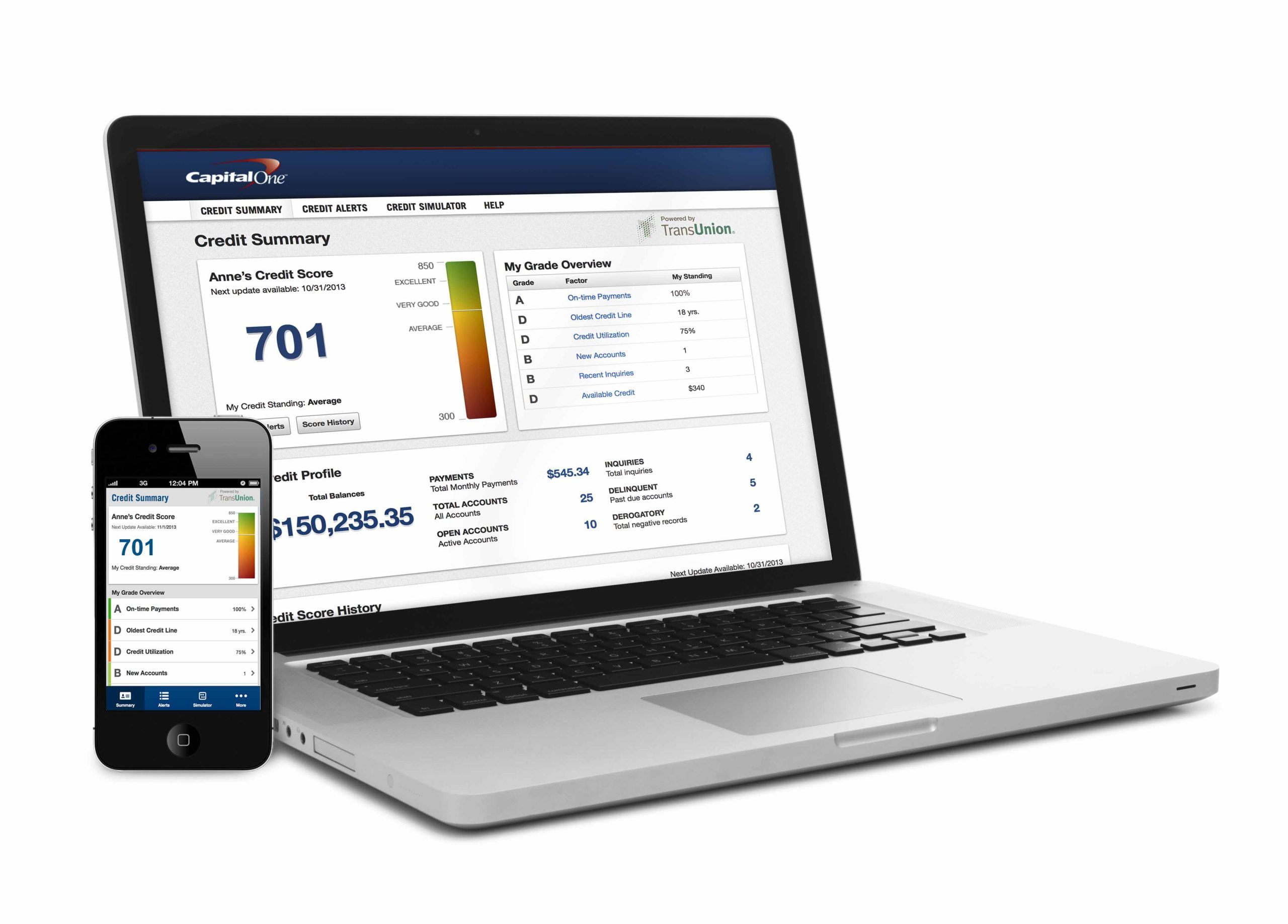

Finance
When Will My Credit Utilization Update
Published: March 6, 2024
Learn how credit utilization updates and impacts your finances. Find out when your credit utilization will update and how it affects your credit score. Discover tips to manage it effectively.
(Many of the links in this article redirect to a specific reviewed product. Your purchase of these products through affiliate links helps to generate commission for LiveWell, at no extra cost. Learn more)
Table of Contents
Introduction
Understanding the intricacies of credit utilization and its impact on your financial well-being is crucial in today's world. As you navigate the realm of personal finance, it's essential to comprehend the factors influencing your credit utilization updates. By gaining insight into this process, you can effectively manage your credit profile and make informed decisions to improve your financial standing.
Credit utilization refers to the ratio of your credit card balances to your credit limits, and it plays a pivotal role in determining your credit score. This ratio is a key indicator of your financial responsibility and management of credit accounts. As such, staying abreast of when your credit utilization updates occur is vital for maintaining a healthy credit profile.
In this comprehensive guide, we will delve into the nuances of credit utilization updates, exploring the factors that influence their timing and the impact they have on your credit score. By shedding light on this essential aspect of personal finance, you will be better equipped to navigate the world of credit and make informed decisions that benefit your financial future.
Understanding Credit Utilization
Credit utilization, often considered one of the most influential factors in determining an individual’s credit score, is a measure of how much of your available credit you are using. It is calculated by dividing your total credit card balances by your total credit card limits and is typically expressed as a percentage. For example, if your total credit card balances amount to $2,000 and your total credit card limits add up to $10,000, your credit utilization ratio would be 20%.
It’s important to note that both individual and overall credit utilization ratios are taken into account when evaluating your creditworthiness. Lenders and credit bureaus consider both the utilization ratio for each credit card and the aggregate utilization ratio across all your credit cards. As a general rule, maintaining a credit utilization ratio below 30% is advisable, as it demonstrates responsible credit management and can positively impact your credit score.
Monitoring and managing your credit utilization is essential for maintaining a healthy credit profile. By keeping your credit utilization low, you can demonstrate to potential lenders that you are a responsible borrower, which can increase your chances of securing favorable terms for loans and credit cards. Understanding the significance of credit utilization and its impact on your financial well-being empowers you to make informed decisions regarding your credit usage and overall financial health.
Factors Affecting Credit Utilization Updates
The timing of credit utilization updates is influenced by several key factors. Understanding these factors can provide insight into when changes to your credit utilization ratio are likely to be reflected in your credit report.
- Billing Cycle: The billing cycle of your credit card plays a significant role in determining when your credit utilization updates. Typically, credit card issuers report your account balances to the credit bureaus shortly after the end of each billing cycle. This means that any payments or purchases made after this reporting date will be reflected in the subsequent billing cycle’s credit utilization update.
- Statement Date: The statement date, which marks the end of your billing cycle, is a crucial factor in credit utilization updates. Your credit card balances as of the statement date are what the credit card issuer reports to the credit bureaus. It’s important to note that even if you pay off your entire balance before the due date, the balance on your statement date is what will be reported for credit scoring purposes.
- Payment Due Date: While your payment due date does not directly impact when your credit utilization updates, making timely payments is crucial for maintaining a healthy credit utilization ratio. By paying your credit card balances in full and on time, you can effectively manage your credit utilization and positively impact your credit score.
- Credit Reporting Policies: Each credit card issuer has its own policies and procedures for reporting account information to the credit bureaus. Understanding your issuer’s reporting practices can provide insight into when your credit utilization updates are likely to occur. Some issuers may report account information to the credit bureaus multiple times per month, while others may do so just once.
By familiarizing yourself with these factors, you can gain a clearer understanding of when changes to your credit utilization ratio are likely to be reflected in your credit report. This knowledge empowers you to make informed decisions regarding your credit card usage and payment timing, ultimately contributing to the maintenance of a healthy credit profile.
How to Monitor Credit Utilization Updates
Monitoring your credit utilization updates is crucial for staying informed about changes to your credit profile and ensuring that your credit utilization ratio remains within healthy limits. Here are some effective ways to monitor your credit utilization updates:
- Regularly Check Your Credit Reports: Obtain and review your credit reports from the major credit bureaus—Equifax, Experian, and TransUnion—on a regular basis. Your credit reports provide detailed information about your credit accounts, including your credit card balances and credit limits. By examining this information, you can track changes to your credit utilization and identify any discrepancies that may require attention.
- Utilize Credit Monitoring Services: Consider enrolling in a credit monitoring service that provides regular updates on changes to your credit report, including credit utilization updates. These services often offer alerts for significant changes, enabling you to stay informed about fluctuations in your credit utilization ratio and take appropriate action if needed.
- Monitor Your Credit Card Statements: Review your credit card statements each month to track your credit card balances and assess your credit utilization. By staying attentive to your monthly statements, you can identify any unexpected changes in your credit utilization and address them promptly.
- Utilize Online Banking and Mobile Apps: Many banks and credit card issuers offer online banking platforms and mobile apps that allow you to monitor your credit card balances and transactions in real time. Taking advantage of these digital tools can help you stay informed about your credit utilization and address any concerns as they arise.
By employing these monitoring methods, you can stay proactive in tracking your credit utilization updates and promptly address any issues that may arise. Maintaining vigilance over your credit utilization ratio is essential for preserving a healthy credit profile and optimizing your financial well-being.
Impact of Credit Utilization Updates
Credit utilization updates can have a significant impact on your credit score and overall financial standing. Understanding the implications of these updates is essential for navigating the world of credit and making informed decisions about your financial health.
When your credit utilization updates, it directly affects your credit score, as this ratio is a key factor in credit scoring models. A lower credit utilization ratio typically signals to lenders that you are effectively managing your credit and may result in a positive impact on your credit score. Conversely, a higher credit utilization ratio can have a detrimental effect on your credit score, potentially leading to higher interest rates on loans and credit cards, as well as impacting your ability to secure new credit.
Furthermore, credit utilization updates can influence lenders’ perceptions of your creditworthiness when you apply for new credit. Lenders often assess your credit utilization ratio to gauge your ability to manage additional credit responsibly. By maintaining a low credit utilization ratio, you can enhance your attractiveness to lenders and increase your likelihood of securing favorable terms on new credit accounts.
It’s important to recognize that credit utilization updates are not permanent and can fluctuate based on your credit card usage and payment patterns. By staying vigilant and actively managing your credit utilization, you can mitigate the potential negative impacts of high credit utilization and work toward maintaining a healthy credit profile.
Ultimately, understanding the impact of credit utilization updates empowers you to take proactive steps to manage your credit responsibly and optimize your financial well-being. By staying informed about your credit utilization ratio and its implications, you can make strategic decisions to improve your credit score and enhance your overall financial standing.
Conclusion
As you navigate the intricate landscape of personal finance, understanding the nuances of credit utilization updates is paramount for maintaining a healthy credit profile and optimizing your financial well-being. By comprehending the factors that influence credit utilization updates and the impact these updates can have on your credit score, you are better equipped to make informed decisions about your credit management.
Monitoring your credit utilization updates through regular review of your credit reports, enrollment in credit monitoring services, and diligent scrutiny of your credit card statements empowers you to stay proactive in managing your credit utilization ratio. By staying informed about changes to your credit utilization, you can address any discrepancies or concerns promptly, ultimately contributing to the preservation of a healthy credit profile.
Recognizing the impact of credit utilization updates on your credit score and creditworthiness enables you to take strategic steps to maintain a low credit utilization ratio, demonstrating responsible credit management to potential lenders. By doing so, you can enhance your eligibility for favorable terms on loans and credit cards, ultimately optimizing your financial prospects.
In conclusion, staying attuned to the timing and implications of credit utilization updates is a fundamental aspect of effective credit management. By leveraging your understanding of credit utilization, you can navigate the world of credit with confidence, make informed decisions to improve your credit score, and secure a solid foundation for your financial future.














